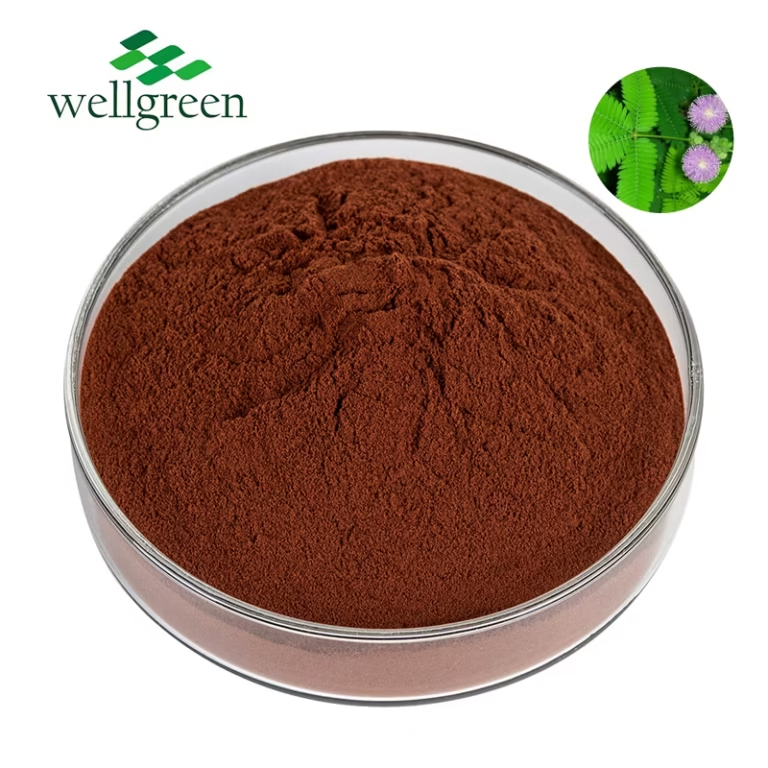Mimosa Hostilis: A Sacred Plant for Indigenous Cultures
Wiki Article

Mimosa hostilis is a sacred plant deeply ingrained in the traditions of numerous Indigenous cultures across South America. For centuries, it has been employed by indigenous communities for its diverse spiritual and medicinal applications. The root bark, known as teonanácalli, is particularly revered for its copyright effects, believed to unveil profound visions that facilitate transformation.
Through ceremonies, the plant spirit of Mimosa hostilis is invoked, guiding individuals on a quest of self-discovery and reconciliation with their inner selves. The knowledge concerning this sacred plant has been transmitted through generations, preserving the rich cultural heritage and knowledge of these communities.
Exploring MHRB Extract: Unlocking Mimosa Hostilis's Potential
Mimosa hostilis, a vibrant plant indigenous to the Amazon Basin, has captured the attention of both traditional healers for centuries. This fascinating species harbors within its roots a potent extract known as MHRB, which has gained significant popularity in recent times.
MHRB extract is celebrated for its potential, often associated with spiritual exploration. Ancient practices suggest a long history of MHRB use in cultural practices.
- Scientists continue to study the chemical constituents of MHRB, seeking to illuminate its full spectrum of effects.
- The nuances surrounding MHRB usage require awareness. It is vital to engage the expertise of knowledgeable individuals before exploring any practices involving this powerful substance.
Exploring the Ethnobotanical Uses of Mimosa tenuiflora
Mimosa tenuiflori, commonly acknowledged as "sacred mimosa", holds a significant position within the ethnobotany literature of diverse tribes. Its wide-ranging properties have been utilized for centuries in traditional medicinal practices, as well as in ceremonies. The bark of this remarkable plant website possess a rich repertoire of bioactive chemicals believed to exhibit medicinal effects.
From curing ailments like pain to boosting spiritual awareness, Mimosa tenuiflora has long been respected for its profound impact on human well-being.
ALook into the Chemistry and Pharmacology of Mimosa Hostilis Root Bark
Mimosa hostilis root bark contains a complex chemical profile, primarily known for its abundant concentrations of alkaloids. Among these, copyright and THH are particularly noteworthy. These compounds possess a range of pharmacological activities, including mind-altering effects. The bark furthermore other alkaloids, like harmine, which may contribute to its comprehensive pharmacological profile.
The traditional uses of Mimosa hostilis root bark include a spectrum of therapeutic purposes, particularly in South American cultures. However, it is crucial to acknowledge that scientific research on the provenance of these uses remains limited.
Harnessing the Power of copyright with Mimosa Hostilis
Mimosa hostilis, a tree native to South America, has captured the interest of researchers and individuals alike for its potent chemicals, particularly dimethyltryptamine, or copyright. copyright is a powerful hallucinogenic substance known for producing intense altered states of consciousness. By ingesting the bark of Mimosa hostilis, one can journey into the realms of copyright-induced experiences. It is important to remember that copyright is a powerful substance and should be treated with reverence.
- Responsible use is paramount, and consulting from experienced individuals or knowledgeable sources is highly recommended.
- The pathway of copyright can be both transformative but also potentially challenging. It is crucial to prepare both mentally and physically for the outcomes that may arise.
copyright from Mimosa hostilis provides a unique opportunity to journey within the depths of consciousness, may leading to spiritual growth and understanding.
Challenges in Using Mimosa Hostilis
The utilization of Mimosa hostilis for traditional purposes raises a myriad of philosophical questions. While some argue that its sacred significance warrants respect and tolerance, others oppose its use due to potential negative consequences. It's crucial to consider this complex issue with sensitivity, taking into account the social contexts and potential side effects. A balanced perspective is essential for navigating the ethical nuances surrounding Mimosa hostilis.
Cultivating Mimosa Hostilis: A Guide for Growers
Embarking on the adventure of cultivating Mimosa Hostilis can be a fulfilling experience for the dedicated grower. This enchanting plant, endemic to tropical regions of the Americas, has gained significant notoriety in recent years due to its unique properties. Upon embarking on your cultivation quest, it is crucial to grasp the specific requirements this plant demands to thrive.
- Providing adequate sunlight is paramount for healthy Mimosa Hostilis growth. These plants thrive in full sunlight, ideally receiving a minimum of eight hours per day.
- Ensuring well-drained soil is essential to prevent root rot, a common ailment that can ruin your plants. A mixture of clayey soil with composted matter is perfect.
- Regular watering is necessary, but be mindful not to overwater your Mimosa Hostilis. Allow the top inch of soil to dehydrate before providing another moistening.
The Shamanic Traditions Surrounding Mimosa Hostilis
Deep within the sacred forests of South America, the rituals of vision have been practiced for generations. Among these potent allies is Mimosa Hostilis, a sacred plant revered by the shamanic traditions of indigenouscommunities. It embodies within its leaves a wellspring of wisdom, guiding seekers on their journeys into the unseen.
The medicine men understand that Mimosa Hostilis is not simply a plant; it is a gateway between worlds, connecting us to the universal energies that sustain all of creation.
Navigating Legal Issues with Mimosa Hostilis
The legal status of mimosa hostilis varies greatly from one location to another. It means that the acceptability of possessing, using, or cultivating this plant is reliant upon your particular area.
Furthermore, laws and regulations surrounding mimosa hostilis are constantly adapting. It is therefore crucial that you meticulously research the applicable legal framework in your locality.
- Talking to a legal professional who specializes in cannabis laws is highly suggested.
- Remaining informed about any amendments to the law can help you avoid any potential legal difficulties.
Mimosa Hostilis and Spiritual Exploration: A Journey Inward unveiling
The ancient wisdom whispered through the rustling leaves of Mimosa Hostilis calls to seekers on a mystical quest. Venturing upon this path is to awaken hidden dimensions within, where the veil between worlds blurs. It's a profound experience that illuminates the soul, revealing truths dormant beneath the surface. As you dissolve with the essence of this sacred plant, be prepared for insights that reshape your understanding.
- Accept the unknown with an open heart and a inquiring mind.
- Let go all expectations and allow yourself to be carried by the flow.
- Remember, this is a path of self-discovery. Believe in your own wisdom.
The wisdom gained through Mimosa Hostilis echoes long after the experience has faded. It is a blessing that can alter your life in profound and lasting ways.
Understanding the Dangers and Advantages of Mimosa Hostilis
Mimosa hostilis is a plant native to South America, gaining increasing attention for its potential pharmacological properties. While it contains valuable compounds like copyright, responsible for its psychoactive effects, it's crucial to approach this plant with caution. Understanding both the risks and the benefits of Mimosa hostilis is essential for safe and informed use. Potential negative consequences can include physical reactions, emphasizing the need for thorough research, responsible consumption, and a controlled environment.
- It's important to consult with a healthcare professional before using Mimosa hostilis or any products derived from it.
- Proper dosage is crucial to minimize potential risks.
- Be aware of the laws surrounding Mimosa hostilis in your area.
- Always prioritize safety and well-being when exploring the use of this plant.
 Report this wiki page
Report this wiki page